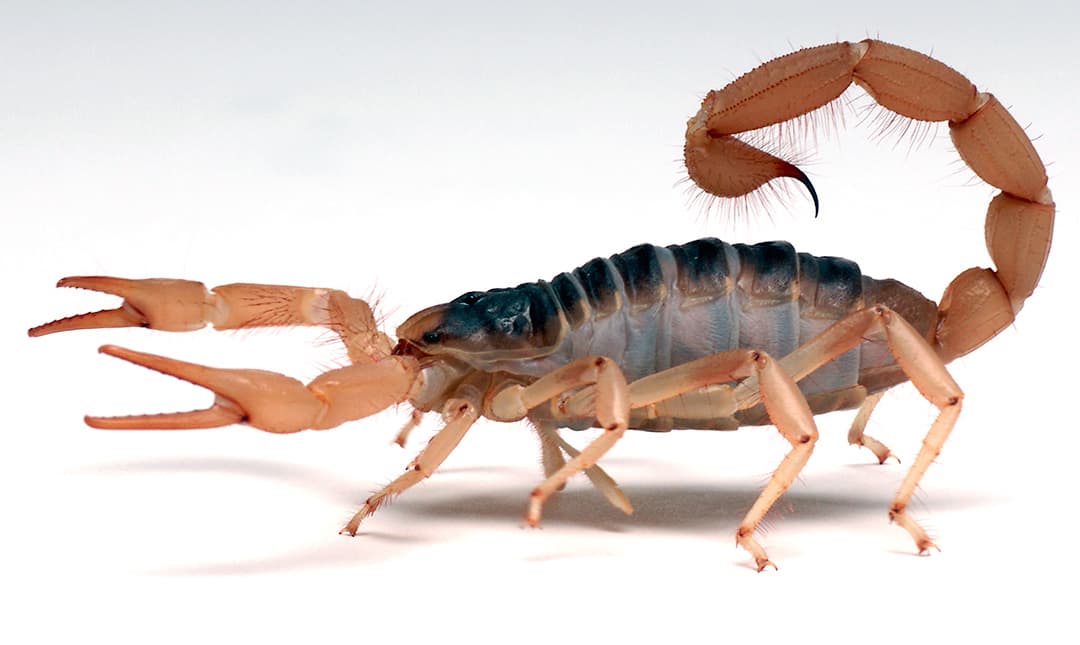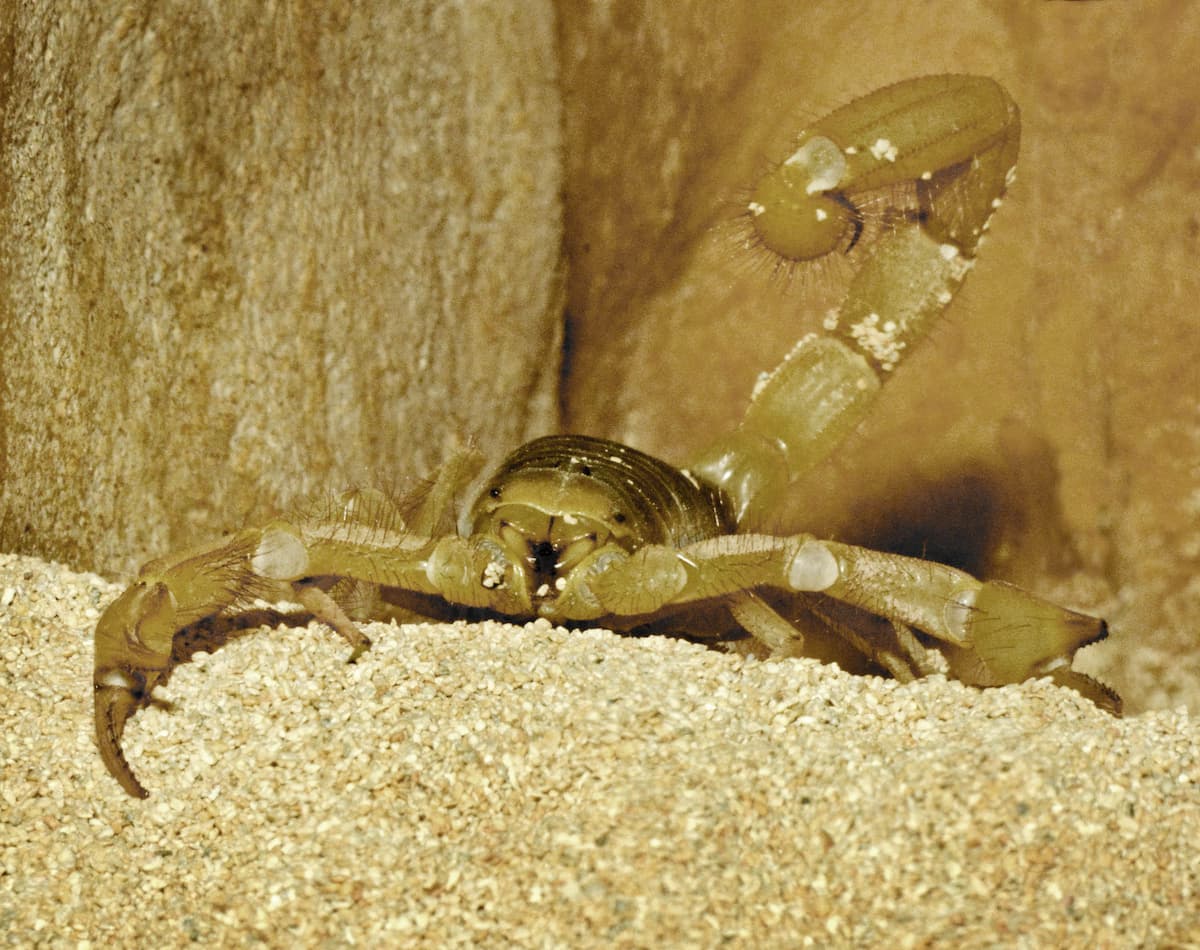About
Commonly thought to be part of the insect family, scorpions are actually classified as arachnids. Like spiders, ticks, and mites, they possess eight legs. The desert hairy scorpion gets its common name from its native habitat and the little brown hairs on its body that detect ground and air vibrations to help locate prey or evade predatory birds and reptiles. This species is nocturnal and escapes from the heat of the day by hiding under rocks or in small rodent burrows. Desert hairy scorpion venom is not as dangerous to humans as that of other scorpion species.
The desert hairy scorpion’s mating ritual consists of a “dance” where the male grabs hold of the female’s pincers (an act known as “juddering”) and they begin rotating around one another as he looks for a suitable place to deposit his sperm sack. Once the dance has finished, both scorpions quickly escape in opposite directions. Like all scorpions, the female will give birth to live young who will live on her wide back for about a week before leaving.


Habitat
Desert hairy scorpions are native to the Mojave and Sonoran deserts of Northern Mexico and the American Southwest.
Diet
Like other scorpions, this species is carnivorous, feeding on insects, lizards, small mammals, and even other scorpions.
Physical Characteristics
Both sexes of scorpion can grow up to 5.5 inches in length. Females are somewhat bulkier than males, but males tend to have larger pincers. In the wild, the desert hairy scorpion’s average lifespan is seven to ten years, but in human care, they can live for 15 to 20 years.
LOCATION WITHIN THE ZOO
You’ll find this species in the Desert LAIR. See Zoo Map.


